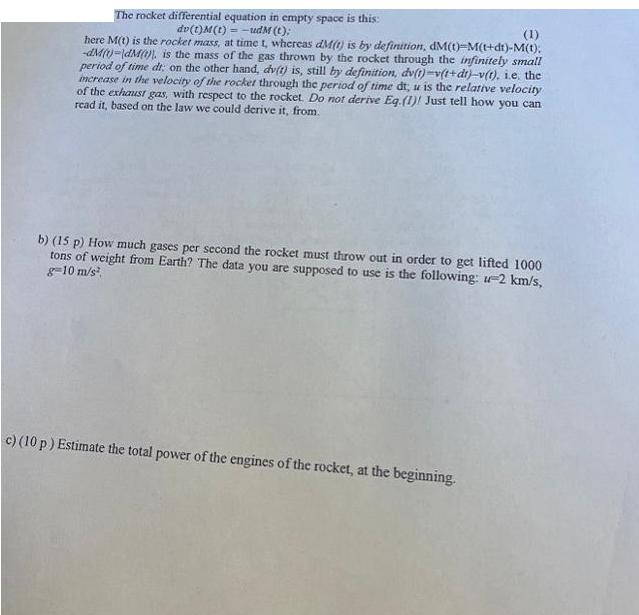Answered step by step
Verified Expert Solution
Question
1 Approved Answer
The rocket differential equation in empty space is this: dv(t)M(t)=-udM (t); here M(t) is the rocket mass, at time t, whereas dM(t) is by

The rocket differential equation in empty space is this: dv(t)M(t)=-udM (t); here M(t) is the rocket mass, at time t, whereas dM(t) is by definition, dM(t)-M(t+dt)-M(t); -dM(1)-1dM() is the mass of the gas thrown by the rocket through the infinitely small period of time dt; on the other hand, dv(t) is, still by definition, dv(1)-v(t+dt)-v(t), i.e. the increase in the velocity of the rocket through the period of time dt, u is the relative velocity of the exhaust gas, with respect to the rocket. Do not derive Eq.(1)! Just tell how you can read it, based on the law we could derive it, from. (1) b) (15 p) How much gases per second the rocket must throw out in order to get lifted 1000 tons of weight from Earth? The data you are supposed to use is the following: u-2 km/s, g-10 m/s. c) (10p) Estimate the total power of the engines of the rocket, at the beginning.
Step by Step Solution
★★★★★
3.50 Rating (157 Votes )
There are 3 Steps involved in it
Step: 1

Get Instant Access to Expert-Tailored Solutions
See step-by-step solutions with expert insights and AI powered tools for academic success
Step: 2

Step: 3

Ace Your Homework with AI
Get the answers you need in no time with our AI-driven, step-by-step assistance
Get Started


